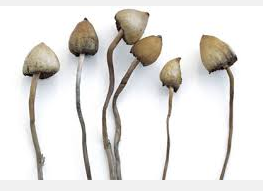The Death Treatment
He recently approved the euthanasia of a twenty-five-year-old woman with borderline personality disorder who did not “suffer from depression in the psychiatric sense of the word,” he said. “It was more existential; it was impossible for her to have a goal in this life.”
The Death Treatment
When should people with a non-terminal illness be helped to die?
Letter from Belgium JUNE 22, 2015 ISSUE
In her diary, Godelieva De Troyer classified her moods by color. She felt “dark gray” when she made a mistake while sewing or cooking. When her boyfriend talked too much, she moved between “very black” and “black!” She was afflicted with the worst kind of “black spot” when she visited her parents at their farm in northern Belgium. In their presence, she felt aggressive and dangerous. She worried that she had two selves, one “empathetic, charming, sensible” and the other cruel.
She felt “light gray” when she went to the hairdresser or rode her bicycle through the woods in Hasselt, a small city in the Flemish region of Belgium, where she lived. At these moments, she wrote, she tried to remind herself of all the things she could do to feel happy: “demand respect from others”; “be physically attractive”; “take a reserved stance”; “live in harmony with nature.” She imagined a life in which she was intellectually appreciated, socially engaged, fluent in English (she was taking a class), and had a “cleaning lady with whom I get along very well.”
Godelieva, who taught anatomy to nurses, had been in therapy since she was nineteen. With each new doctor, she embraced the therapeutic process anew, adopting her doctor’s philosophy and rewriting her life story so that it fit his theory of the mind. She continually dissected the source of her distress. “I am confronted almost daily with the consequences of my childhood,” she wrote to her mother. She’d wanted to be a historian, but her father, domineering and cold, had pressured her to be a doctor. Her mother, who was unhappy in her marriage, reminded her of a “slave.” “New insight,” she wrote in her diary. “Do not want to always nod yes like her and be self-effacing.”
Godelieva was preoccupied with the idea that she would replicate her parents’ mistakes with her own children. She married when she was twenty-three, and had two children. But the marriage was tumultuous and ended in divorce, in 1979, when her son was three and her daughter was seven. Two years later, their father, Hendrik Mortier, a radiologist, committed suicide. As a single parent, Godelieva was overwhelmed. In a diary entry from 1990, when her children were teen-agers, she instructed herself to “let my children be themselves, respect them in their individuality.” But she found herself fighting with her daughter, who was independent and emotionally distant, and depending on her son, Tom, a “victim of my instability,” she wrote. She worried, she told her psychologist, that her children were “now paying for all that has happened generations earlier.”


